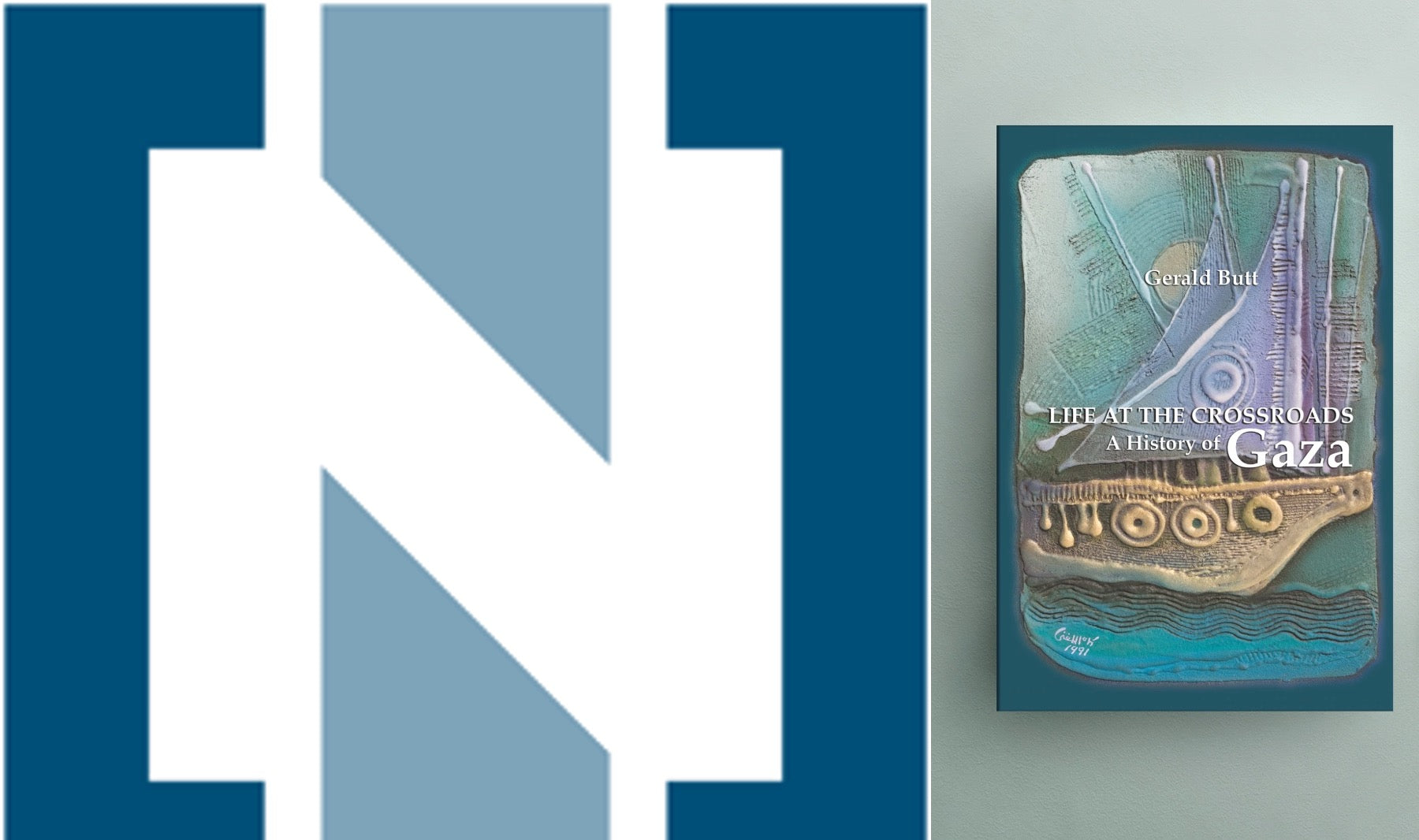
GULF TODAY
Life at the Crossroads & Jerusalemites
Two books on Palestine published this month by Rimal Publications, based in Nicosia, are on display at the Abu Dhabi book fair which opened on Tuesday March 17th and closes on Sunday 22nd. The first, an updated edition of "Life at the Crossroads: A History of Gaza" by Gerald Butt, is essential reading for all who wish to understand Gaza and its tenacious and tough people. The second, "Jerusalemites: A Living Memory" by Hazem Zaki Nusseibeh, is an autobiography by a Palestinian public figure whose life was shaped by the struggle for Jerusalem . While the first is a "biography" of a place and the second an autobiography of a person, the books contain the common threads of war and displacement, the fight for survival and definition.
Life at the Crossroads
Butt relates Gaza 's long history as a cross-roads where its populace and culture were a blend of the peoples and influences arriving on this narrow fertile coastal strip. Of Gaza 's early history, traced to the late fourth millennium BC, Butt wrote, "Archaeologists have pieced together a story of a land constantly under threat, a land seized and occupied by a succession of invaders by neighbouring superstates..the meeting place and battlefied of great Empires.." Today it remains a battleground between Palestinians and the people of Arab region, on one hand, and Israeli outsiders and their western supporters, on the other.
Butt describes the phases of Gaza's turblent history, including the modern period which began when took control of Palestine in the aftermath of World War I and opened the country's gates to European Jewish immigrants. They built an underground army and political organisation with the aim of imposing a Jewish state on Palestine and ethnically cleansing its natives. When this happened in 1948, native Gazans, who had not been involved in three decades of hostilities in Jerusalem, central and northern Palestine , were suddenly overwhelmed by a tsunami of refugees. The refugees, who came to constitute 80 per cent of the population of Gaza , forever changed its character by clustering in dense camps dependant on international charity.
Over the past 61 years, the people of Gaza, whether Gazawis or refugees, have been hammered by , earning its fierce hatred because of their refusal to relinquish their land, renounce their identity, and end their resistance to 's harsh occupation. Butt added a chapter, updating the book originally published in 1995 at a time of false hope due to the Oslo peace process, to take in the last 13 years of disillusionment, decline, war and suffering. The book ends with 's latest vicious 22-day onslaught which killed 1,450 Gazans and wounded more than 5,000.
During this war, Gaza 's only archaeological museum and repository of its history, built and stocked with some 350 antiquities by contractor Jawdat Khoudary, was damaged by blast from an Israeli bomb dropped in a field next door. Eight ancient pottery amphorae were smashed and the heavy wooden door to the museum was blown open. Khoudary, a true Gazawi, said he would promptly reopen the museum to groups of school children so they could learn that the Strip has a proud history as well as a wealth of trouble.
Jerusalemites
Nusseibeh's story, which begins with his birth in Jerusalem in 1922, is a personal and political history of Palestine since the Palestinian-Jewish clashes of 1929 when he was a boy. As could be expected, his narrative is laced with outrage and deep resentment. Jerusalem , his hometown and focus of his life, was in 1948 also overwhelmed by refugees from western portions of the city and nearby villages whose arrival changed the Old City and its environs. Like many ambitious young people of the generation of the "Naqba," the 1948 Catastrophe, Nusseibeh opted for education as a means to deal with the Palestinian predicament, taking his first degree at the American University of Beirut where he became an Arab nationalist, and his MA and doctorate at Princeton.
He returned to East Jerusalem in 1955 where he took up the post of chairman of the Jordanian delegation to the Mixed Armistice Commission, established in 1949 to deal with friction along the ceasefire line with . This job was the first in a succession of senior Jordanian ministerial and diplomatic posts which forced Nusseibeh to establish his residence in Amman, 83 kilometres from Jerusalem . Since occupied the city, the West Bank and Gaza in 1967, Amman has been on the eastern side of the deep Palestinian-Israeli divide rather than a commutable distance from Jerusalem . Nevertheless, Nusseibeh retained his close connection with Jerusalem and family members who dwelt there. He joined societies created to sustain and defend Palestinian Arab Jerusalem and its very special character. Without thinking, he put foward the claim in his book that the city has suffered more than "any other city" due to 's actions. But that has been the tragic fate of the ruined and destitute cities of the Gaza Strip.
The books - both comfortable reads - are complimentary and can be ingested in sequence to gain a better understanding of current developments in Gaza and Jerusalem.
Review by Michael Jansen
GULF TODAY - Panorama
March 20, 2009
This article was published on Friday 20 March, 2009.


